ID 1249727
Lot 126 | EUCLIDES (fl. c.300 B.C.)
Valeur estimée
£ 25 000 – 35 000
Elementa geometriae [translated by Adelard of Bath, edited by Johannes Campanus]. Venice: Erhard Ratdolt, 25 May 1482.
First edition of 'the oldest textbook in the history of science' (Norman) and 'a monument of typography' (Kelly)—'an outstandingly fine piece of printing' (PMM). A work which has 'exercised an influence upon the human mind greater than that of any other work except the Bible' (DSB 4, p.415). A brilliant compilation and refinement of earlier mathematical knowledge, the Elements remained a standard textbook for more than two millennia. One of the most famous geometric proofs – 'Pythagoras's theorem' – is in fact due to Euclid, and it is stated as proposition 47 in Book I. The 'decisive influence of Euclid's geometrical conception of mathematics is reflected in two of the supreme works in the history of thought, Newton's Principia and Kant's Kritik der reinen Vernunft' (DSB p.425). Euclid is accepted as the author of the first 13 books, while book 14 is considered the work of Hypsicles, and book 15 belongs to the school of Isidorus Milesius (see Hillard 776).
Ratdolt's first edition of the Elements is not only 'one of the great classics in the history of science [but also] a masterpiece of early typographical ability and ingenuity' (Buhler). 'Ratdolt created geometric diagrams which are so finely wrought that the method of manufacture still baffles historians of printing. The most accepted theory today is that they were made from bent rules or perhaps cast metal shapes, but we cannot be sure how such consistent, thin and accurate lines were printed' (Kelly). Other challenges included running out of woodcut initial Ss (due to every proposition beginning with the same set formula) and a general shortage of capital letters resulting from their use in labelling the over 500 marginal diagrams—all met by Ratdolt to produce the most beautiful scientific book of the incunable period, which became the model for much that followed.
Variants occur in the first quire; the present copy agrees with the main entry in GW. Furthermore, the present copy has the corrected version of the last line of o8r (Curt Bühler, 'A typographical error in the editio princeps of Euclid', Gutenberg-Jahrbuch 1966, pp.102-104). The Glasgow Incunabula Project notes discrepancies in the marginal diagrams; the present copy has two diagrams each on d1r and d1v, and 2 diagrams on e1r. Goff E-113; HC *6693; BMC V, 285; Flodr 170 Eucl.1; GW 9428; Bod-inc. E-036; BSB-Ink. E-106; Klebs 383.1; Norman 729; Redgrave 26; Sander 2605; PMM 25; Thomas-Stanford 1a; ISTC ie00113000.
Chancery folio (263 x 208mm). 137 leaves (of 138, without final blank). Heading on a2r printed in red, woodcut three-quarter vine-work border opening text [Redgrave border 3, perhaps by Bernhard Maler], woodcut white-on-black initials, numerous diagrams in the text (leaf a1 supplied from another copy, slightly shorter, with fore-edge extended, some repairs and possibly small round library stamp removed [in blank lower margin], quire ‘a’ somewhat wormed [notably leaf a2], final leaf with fore-edge restored not affecting text, other worming throughout occasionally affecting letters, upper corner of o8 torn out not affecting text and restored with two diagrams neatly added in pen-and-ink facsimile, browning, spotting and stains). Early 20th-century pale brown half pigskin by Swedish royal bookbinder Gustaf Hedberg [1859-1920] of Stockholm with his ticket, marbled paper boards, spine in six compartments with raised bands, marbled paper endpapers. Provenance: a few contemporary annotations – cutting from bookseller’s catalogue on verso of front free endpaper – Baron Per Hierta (Swedish bibliophile, 1864-1924; manuscript note in ink on preliminary blank dated 1900).
| Artiste: | Euclide (325 avant J.-C. - 265 avant J.-C.) |
|---|---|
| Lieu d'origine: | Italie, Europe |
| Catégorie maison de vente aux enchères: | Livres anciens, Livres et manuscrits, Livres imprimés |
| Artiste: | Euclide (325 avant J.-C. - 265 avant J.-C.) |
|---|---|
| Lieu d'origine: | Italie, Europe |
| Catégorie maison de vente aux enchères: | Livres anciens, Livres et manuscrits, Livres imprimés |
| Adresse de l'enchère |
CHRISTIE'S 8 King Street, St. James's SW1Y 6QT London Royaume-Uni | |
|---|---|---|
| Aperçu |
| |
| Téléphone | +44 (0)20 7839 9060 | |
| Commission | see on Website | |
| Conditions d'utilisation | Conditions d'utilisation |
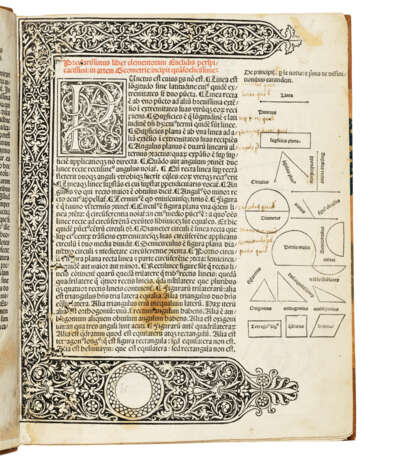
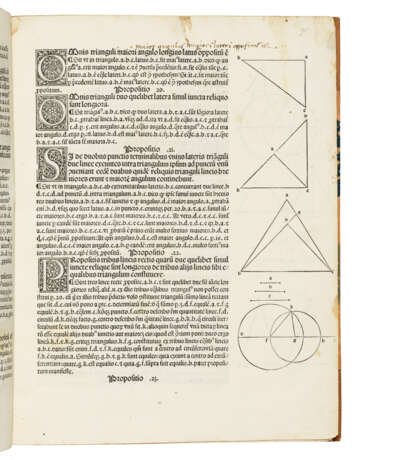
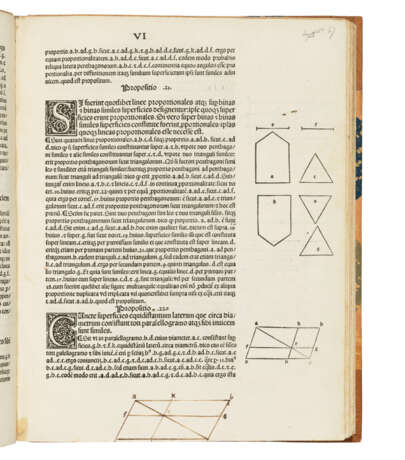
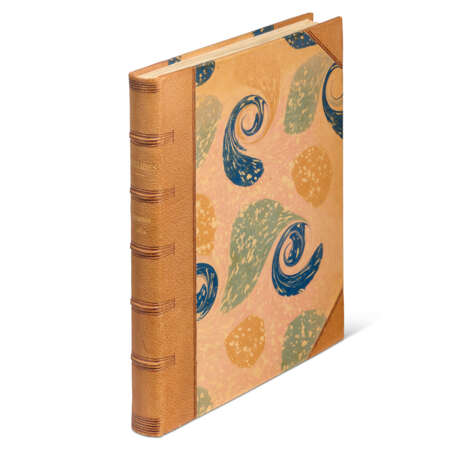

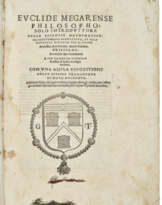
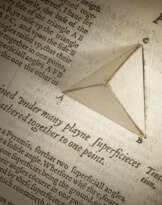
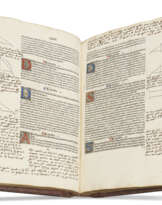

![Elementorum libri XIII [-Phaenomena; Specularia; Perspectiva; Data]](/assets/image/picture_2660725/b672f/tmy4rz51tjwgapdykc-mhx2t2fo94dzxjfn004pvhmp4ax5ep1latktpksi3zc1674692820jpg__fix_162_205.jpeg)




